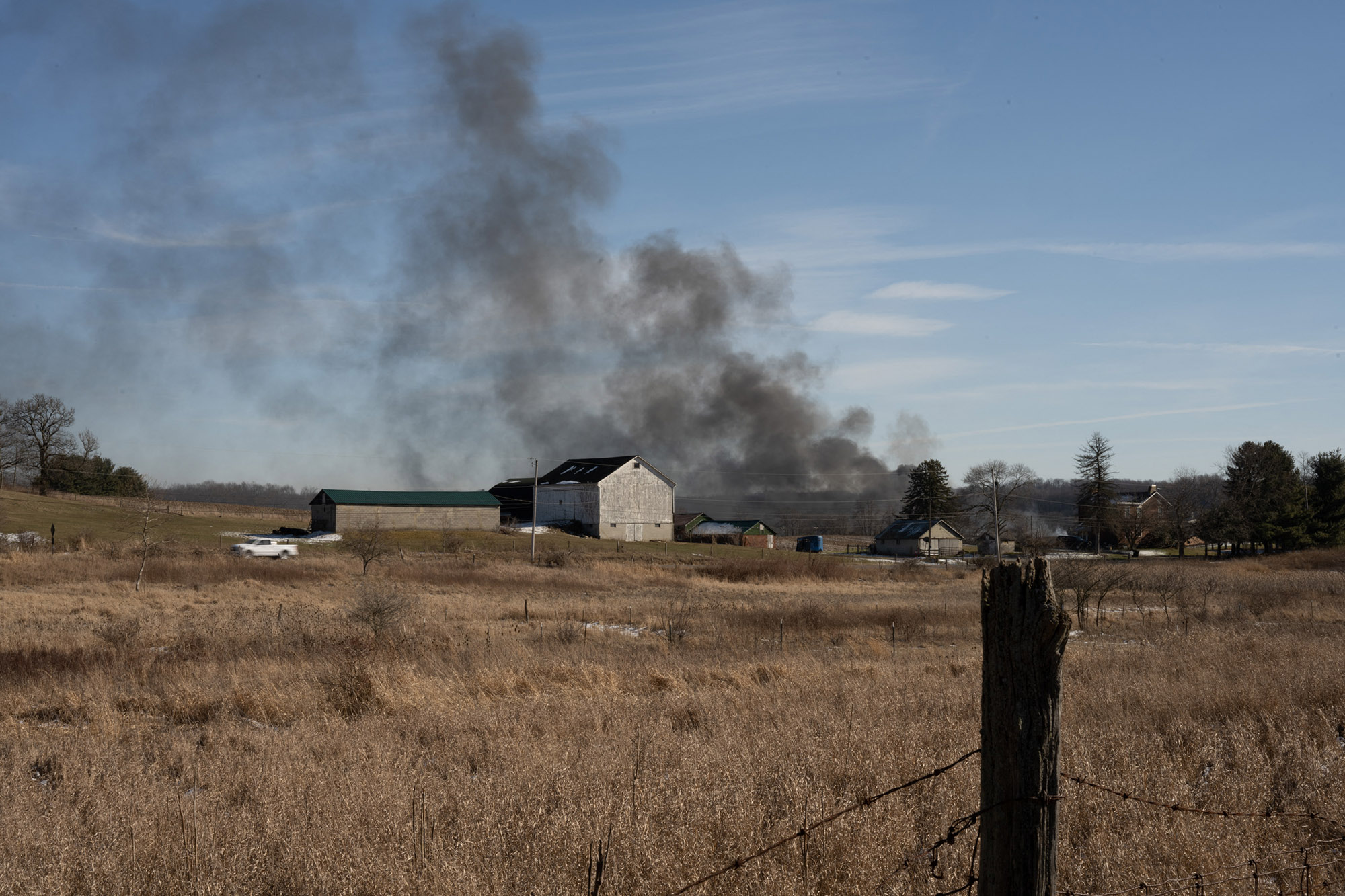Investigation Into Lingering Toxic Chemicals In Buildings Following Ohio Train Derailment

Table of Contents
Types of Toxic Chemicals and Their Potential Long-Term Effects
The derailment released a cocktail of hazardous substances, many of which are known carcinogens and pose significant long-term health risks. Understanding the potential for lingering toxic chemicals is crucial for effective remediation and public health protection.
Vinyl Chloride and its Health Risks
Vinyl chloride, a known human carcinogen, is particularly concerning due to its volatility and persistence in the environment. Exposure, even at low levels, can lead to serious health problems.
- Short-term effects: Dizziness, headaches, nausea, and respiratory irritation.
- Long-term effects: Liver cancer, brain cancer, lung cancer, and other cardiovascular diseases. Studies by the National Cancer Institute have linked long-term exposure to vinyl chloride to a significantly increased risk of these cancers.
- Lingering contamination: Vinyl chloride's volatility means it can easily vaporize and contaminate indoor air, requiring careful assessment and remediation to address residual chemical contamination.
Butyl Acrylate and Other Released Chemicals
Beyond vinyl chloride, the derailment released other chemicals such as butyl acrylate, which also poses significant health risks.
- Butyl acrylate: This chemical can cause skin and eye irritation, respiratory problems, and potential long-term health effects.
- Other chemicals: The exact mixture and quantities of other released chemicals are still being investigated, but the potential for combined toxic effects and synergistic interactions adds to the complexity of assessing the lingering risks.
- Detection challenges: The presence of low levels of these persistent toxic chemicals poses a challenge, requiring sensitive analytical techniques for accurate detection and measurement.
Methods for Detecting Lingering Toxic Chemicals in Buildings
Identifying and quantifying lingering toxic chemicals requires a multi-pronged approach using various testing methods.
Air Quality Testing
Assessing air quality is paramount to determine the extent of airborne contamination.
- Technologies used: Gas chromatography-mass spectrometry (GC-MS) and mass spectrometry are commonly employed to identify and quantify volatile organic compounds (VOCs) and other toxic chemicals present in the air.
- Sampling techniques: Proper sampling techniques are vital to ensure accurate and representative results. This includes choosing appropriate sampling locations, durations, and using calibrated equipment.
- Laboratory analysis: Samples are sent to accredited laboratories for analysis, where experts interpret the results to assess potential health risks.
Surface Sampling and Analysis
Surface contamination can occur through direct contact with spilled chemicals or through settling of airborne particles.
- Sampling methods: Swabs, wipes, and other surface sampling techniques are used to collect samples from various surfaces within the building.
- Laboratory techniques: These samples are then analyzed using techniques such as High-Performance Liquid Chromatography (HPLC) and Inductively Coupled Plasma Mass Spectrometry (ICP-MS) to identify and quantify the persistent toxic chemicals present.
Water Testing
Contamination of water sources is another critical concern following such events.
- Detection methods: Water samples are analyzed to identify the presence and concentration of various chemicals using techniques similar to those used for air and surface sampling.
- Leaching: Chemicals from contaminated soil can leach into groundwater, posing a long-term risk to drinking water sources.
Remediation Strategies for Contaminated Buildings
Addressing lingering toxic chemicals requires a comprehensive remediation strategy.
Air Purification Techniques
Removing or neutralizing airborne contaminants is a critical step.
- Technologies: Air scrubbers, activated carbon filters, and other air purification technologies can be employed to remove or reduce the concentration of VOCs and other toxic chemicals in the air.
- Effectiveness: The effectiveness of these techniques depends on factors such as the type and concentration of contaminants, the ventilation rate, and the size of the area being treated.
Surface Decontamination Procedures
Contaminated surfaces need to be thoroughly cleaned or removed.
- Cleaning procedures: Specific cleaning protocols using appropriate detergents and disinfectants are essential to remove surface contamination.
- Waste disposal: Proper disposal of contaminated materials is crucial to prevent further spread of contamination.
Long-Term Monitoring and Health Surveillance
Ongoing monitoring and health assessments are essential to ensure long-term safety.
- Benefits of monitoring: Continuous air, water, and surface sampling helps track the effectiveness of remediation efforts and identify any potential resurgence of contamination.
- Health support: Providing access to healthcare and ongoing health monitoring for affected individuals is crucial for mitigating potential long-term health effects.
Conclusion
The investigation into lingering toxic chemicals following the Ohio train derailment highlights the significant risks posed by such events. The presence of persistent toxic chemicals like vinyl chloride and butyl acrylate necessitates comprehensive testing using various methods, including air quality testing, surface sampling, and water analysis. Effective remediation strategies, including air purification, surface decontamination, and long-term monitoring, are essential to protect public health. The long-term health implications of exposure to these chemicals underscore the urgent need for continued monitoring and robust health surveillance programs for affected communities. The lingering effects of the Ohio train derailment underscore the urgent need for comprehensive investigations into lingering toxic chemicals and the implementation of effective remediation strategies. Demand accountability and support initiatives focused on the long-term health of affected communities. We must learn from this disaster and implement stricter regulations and improved emergency response protocols to prevent future incidents involving lingering toxic chemicals.

Featured Posts
-
 The Military Base At The Center Of Us China Rivalry
Apr 26, 2025
The Military Base At The Center Of Us China Rivalry
Apr 26, 2025 -
 Europe Rejects Ai Rulebook Amidst Trump Administration Pressure
Apr 26, 2025
Europe Rejects Ai Rulebook Amidst Trump Administration Pressure
Apr 26, 2025 -
 2700 Miles From Dc A Rural Schools Experience Of Trumps First 100 Days
Apr 26, 2025
2700 Miles From Dc A Rural Schools Experience Of Trumps First 100 Days
Apr 26, 2025 -
 Shedeur Sanders Nfl Draft Stock An Espn Analysts Expanded Analysis
Apr 26, 2025
Shedeur Sanders Nfl Draft Stock An Espn Analysts Expanded Analysis
Apr 26, 2025 -
 The Ultimate New York Knicks Roommates Show Guest List 12 Picks
Apr 26, 2025
The Ultimate New York Knicks Roommates Show Guest List 12 Picks
Apr 26, 2025
